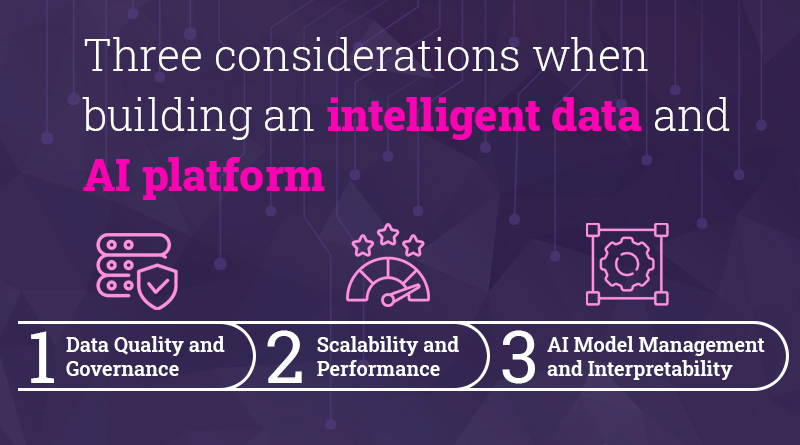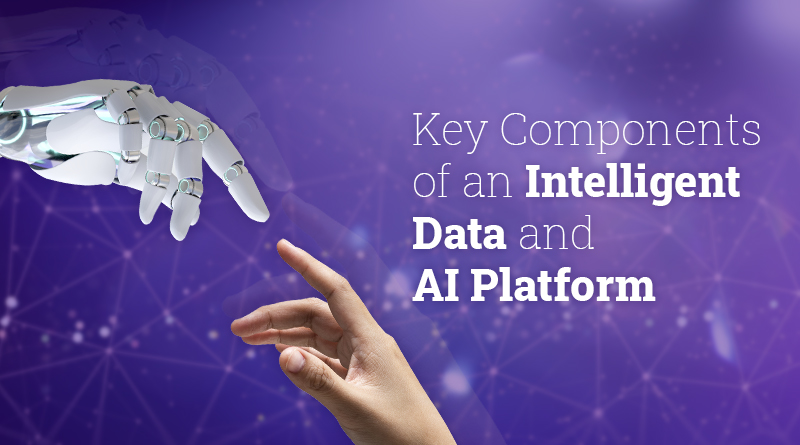Introduction
In the rapidly evolving landscape of data and artificial intelligence, building a robust and intelligent data platform is crucial for organizations seeking to harness the power of data-driven decision-making and AI-driven insights. To establish a solid foundation for such a platform, certain key components must be carefully considered and integrated. This blog aims to explore and understand these foundational elements that are essential for developing an intelligent data and AI platform.
The Power of Cloud-Based Time Attendance Systems for Modern Enterprises
Importance of a Solid Foundation for an Intelligent Data and AI Platform
In the fast-paced world of data-driven decision-making, organizations are increasingly relying on intelligent data and AI platforms to gain valuable insights, automate processes, and stay competitive. However, the success of any AI initiative hinges on the strength of its foundation. A well-designed and robust foundation is crucial to support the complex ecosystem of data management, AI algorithms, scalability, security, and user experience.
Building an intelligent data and AI platform requires careful consideration of various key components that work together harmoniously. These components lay the groundwork for seamless data integration, effective AI modeling, and efficient operations. By understanding and prioritizing these foundational elements, organizations can ensure the longevity and success of their AI projects.
Discover the Power of Drupal 10 | Navigating the Drupal 9 End-of-Life | Building Success: Streamlining Workforce Management for Construction Enterprises
Each Component and Its Significance in Building the Platform
-
-
Data Management and Integration:
Efficient data collection, storage, and integration are fundamental to any AI platform. This component encompasses data acquisition from diverse sources, organizing and cataloging data, and establishing seamless data pipelines to ensure a steady flow of information to AI models.
-
Data Governance and Quality Assurance:
Data governance ensures that data is handled responsibly and securely throughout its lifecycle. Additionally, data quality assurance measures are vital to identify and rectify inconsistencies or errors in data, enhancing the accuracy and reliability of AI insights.
-
Artificial Intelligence and Machine Learning Algorithms:
AI and ML algorithms are the core of any intelligent data platform. Understanding the types of algorithms and selecting the most suitable ones for specific tasks are crucial for building predictive models and driving actionable insights.
-
Scalability and Performance Optimization:
With the exponential growth of data, scalability becomes critical for AI platforms. This component delves into techniques for handling large datasets and optimizing performance to deliver real-time and efficient AI solutions.
-
Security and Privacy Measures:
Safeguarding sensitive data and ensuring compliance with privacy regulations are paramount. This component explores various security measures, access controls, and privacy-preserving techniques to protect data and maintain trust.
-
User Interface and Experience:
The platform’s success depends on user adoption and ease of use. This component focuses on designing an intuitive interface and providing self-service analytics capabilities to empower users in making data-driven decisions.
-
Maximizing GA4 | Power of Accessibility Testing | Battle of the E-commerce Titans: Drupal Commerce vs Magento – Real-World Showdown
Data Management and Integration
Data Management and Integration are fundamental components of building an intelligent data and AI platform. They involve the collection, storage, organization, and integration of data from various sources to create a unified and coherent data ecosystem.
Here’s an overview of Data Management and Integration in the context of an intelligent data and AI platform:
-
Data Collection and Acquisition:
– Data collection involves gathering data from diverse sources, including databases, APIs, files, IoT devices, web scraping, and more.
– Acquisition methods can vary based on the type of data, the volume, and the frequency of updates.
-
Data Ingestion Methods and Challenges:
– Data ingestion refers to the process of bringing collected data into the data platform for further processing.
– Challenges in data ingestion include data volume, velocity, and variety, ensuring data integrity during transfer, and handling real-time streaming data.
-
Data Storage and Organization:
– Data storage solutions are used to store and manage the collected data effectively.
– Organizations can choose from various storage options, such as traditional databases (e.g., SQL databases), data lakes, data warehouses, and NoSQL databases.
-
Choosing the Right Storage Solutions:
– The choice of storage solutions depends on factors like data access patterns, scalability requirements, cost considerations, and the specific use cases of the data platform.
-
Data Cataloging and Metadata Management:
– Data cataloging involves creating a centralized repository of metadata, which provides information about the datasets available in the platform.
– Metadata management facilitates data discovery, improves data governance, and enhances collaboration among data stakeholders.
-
Data Integration and Data Pipelines:
– Data integration refers to the process of combining data from different sources to create a unified view.
– Pipelines are sets of processes and tools used to automate data integration, transformation, and movement within the platform.
-
Extract, Transform, Load (ETL) Processes:
– ETL processes are commonly used in data integration, where data is extracted from source systems, transformed into a suitable format, and loaded into the target storage.
-
Real-time Data Integration for Dynamic Data Environments:
– In dynamic data environments, real-time data integration is crucial for handling continuously changing data.
– Technologies like Apache Kafka and Apache Flink are commonly used for real-time data processing and integration.
Top Drupal 9 Features That Make It the Ultimate CMS for Your Next Project | The Future of Retail: Leveraging the Metaverse for Business Success
Artificial Intelligence and Machine Learning Algorithms
Artificial Intelligence (AI) and Machine Learning (ML) algorithms are the backbone of intelligent data platforms and the driving force behind data-driven decision-making. These algorithms enable computers to learn from data, identify patterns, and make predictions or decisions without explicit programming.
Here’s an overview of AI and ML algorithms and their significance in data platforms:
-
Artificial Intelligence (AI):
– AI refers to the simulation of human intelligence in machines that can perform tasks that typically require human intelligence, such as understanding natural language, visual perception, problem-solving, and decision-making.
– In data platforms, AI technologies help in automating complex tasks, finding hidden patterns in data, and enabling smart, data-driven applications.
-
Machine Learning (ML):
– ML is a subset of AI that focuses on the development of algorithms that learn from data and improve their performance over time with experience.
– In the context of data platforms, ML algorithms analyze large datasets to identify patterns, correlations, and trends that human analysts might miss.
ML algorithms can be broadly categorized into three types:
-
Supervised Learning:
– Supervised learning involves training ML models on labeled datasets, where the desired outcome is known. The algorithm learns to map input data to the correct output labels.
– It is used for tasks like classification (e.g., email spam detection, sentiment analysis) and regression (e.g., predicting house prices based on features).
-
Unsupervised Learning:
– Unsupervised learning works with unlabeled data, and the algorithm aims to find patterns or groupings in the data without explicit guidance.
– Common applications include clustering (e.g., customer segmentation) and anomaly detection (e.g., fraud detection).
-
Reinforcement Learning:
– Reinforcement learning involves an agent interacting with an environment and learning to take actions to maximize rewards.
– This type of learning is used in scenarios where the model needs to learn by trial and error, such as game-playing agents and autonomous systems.
5 Trends Shaping Grocery Retail And Beyond | Winning at B2B Commerce | NopCommerce – The Ultimate Complete Guide
Three Considerations When Building an Intelligent Data and AI Platform
When building an intelligent data and AI platform, several key considerations are essential to ensure its success and effectiveness.

Here are three critical considerations:
-
Data Quality and Governance:
Data is the lifeblood of any AI platform, and its quality directly impacts the accuracy and reliability of AI models. Ensuring data quality involves:
a) Data Governance: Establishing clear data ownership, access controls, and data management policies to maintain data integrity, security, and compliance.
b) Data Quality Assurance: Implementing processes for data cleansing, validation, and enrichment to address issues like missing values, inconsistencies, and errors.
-
Scalability and Performance
As data volumes grow and AI workloads increase, the platform’s ability to scale and perform efficiently becomes crucial. Considerations include:
a) Scalable Infrastructure: Designing a scalable architecture that can handle large datasets and growing computational demands.
b) Parallel Processing: Utilizing technologies like distributed computing and parallel processing to optimize performance.
c) Hardware Considerations: Evaluating hardware options, such as GPUs, TPUs, and cloud-based resources, to accelerate AI computations.
-
AI Model Management and Interpretability
Managing AI models effectively is vital for long-term success and ongoing improvements. Key aspects include:
a) Model Monitoring: Implementing continuous model monitoring to detect drift and degradation in model performance over time.
b) Model Interpretability: Ensuring AI models can be understood and explained to gain user trust, comply with regulations, and identify biases.
c) Model Versioning: Maintaining a version control system to track model changes and facilitate model rollback if needed.
By carefully considering data quality, scalability, and AI model management, organizations can build a robust and reliable intelligent data and AI platform. This platform will not only deliver accurate insights and predictions but also support the organization’s growth and decision-making processes effectively.
Leveraging Big Data in Ecommerce | Ultimate Guide To ChatGPT | Immersive eCommerce is Here
Conclusion
In building an intelligent data and AI platform, organizations must foster a culture of innovation, learning, and collaboration. By continuously evolving and improving the platform based on user feedback, emerging technologies, and changing business needs, organizations can stay at the forefront of AI-driven insights and transformative outcomes.
With a modern enterprise data and AI platform and foundation paired with the right data culture, organizations can unlock more value, better understand and connect with customers, operate far more efficiently, and innovate in ways never before possible.
Please reach out to us for free consultation on how Data and AI can help your business reach the next level.











